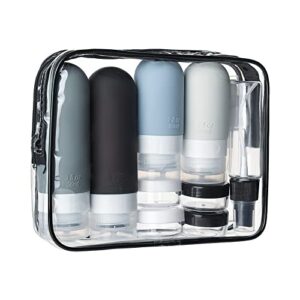
Wellness travel is booming, with trips projected to grow at a 14.7% annual rate and spending increasing by 16.6% each year, according to the Global Wellness Institute.
Today, nearly every destination offers its version of a wellness escape. However, the concept of traveling for health and healing is hardly new. And while it didn’t start here, it can be traced back almost 200 years to the thermal waters of Hot Springs, Arkansas.
Long before the rise of yoga retreats, juice cleanses, and meditation cruises, Hot Springs was the nation’s original health resort. Its history is deeply intertwined with the American pursuit of wellness, a legacy still alive today in Hot Springs National Park.
“This is the oldest protected area in the National Park Service,” Cane West, a park ranger, explained during a recent tour. “And it all began because of the water.”
America’s First Protected Health Resource
Designated by Congress in 1832, Hot Springs predates Yellowstone by forty years. It was set aside not for scenery or wildlife but because of the belief that the naturally heated springs offered curative properties. The earliest version of the park protected only the thermal springs and a few acres of surrounding land.
“Parks are for people, not systems,” West said. “The first park boundary was drawn around where the water comes out, so people could continue to access it.”
As interest in outdoor recreation grew in the 20th century, the park expanded. Today, it covers 5,500 acres of forested mountains, offering 26 miles of trails in the hills surrounding the historic bathhouses.
At the heart of it all are the springs themselves — 47 of them. Rainwater seeps deep into the earth, traveling down nearly a mile and a half, where it heats naturally before resurfacing through fault lines. The process takes an estimated 4,400 years, making each drop ancient by the time it reaches the surface. The water emerges clean, with a neutral pH and low mineral content, naturally sterilized by the Earth’s heat. Hot Springs water leaves the ground at approximately 134°F.
“Our water has been studied for over two centuries,” the ranger said. “Scientists have asked the same questions people still ask today: how it gets hot, what minerals it contains, and whether it has healing properties.”
How Hot Springs Became America’s Health Resort
In the 19th and early 20th centuries, healing at Hot Springs was a serious, highly structured process. Visitors did not simply soak for leisure. They arrived with medical prescriptions in hand, referred by doctors who saw the thermal baths as therapy for conditions like rheumatism, arthritis, skin diseases, digestive disorders, and nervous system ailments.
Guests began each day with a 15- to 20-minute hot thermal bath designed to expand blood vessels, promote circulation, and stimulate healing. After the bath, they would be wrapped in warm towels and placed in a cooling room to lower their body temperature gradually.
For additional therapies, patients entered steam cabinets — tall, coffin-like enclosures where only the head remained exposed, allowing heat and steam to target the body intensely. Sitz baths, needle showers, and full-body massages were also common, intended to detoxify the body and relieve chronic pain.
Some treatments were even more specialized. Physicians prescribed drinking water directly from specific springs, believing the mineral content could aid in digestion and kidney function. Hydrotherapy tubs equipped with jet streams were used to rehabilitate injuries and treat muscle atrophy, a practice that would later influence physical therapy methods for patients with polio.
“This was a giant landscape for health,” the ranger said. “The springs, the trails, the bathhouses, everything was built around the belief that water could heal.”
Hot Springs was home to the nation’s first federally operated health resort, complete with a government-run bathhouse and military hospital. Access to treatment was stratified by class and race for much of its history, but the overarching mission remained the same: to heal through the natural powers of water.
Experiencing the Tradition Today at Buckstaff Bathhouse
Today, visitors can still experience this historic method of healing at the Buckstaff Bathhouse, the only continuously operating bathhouse on Bathhouse Row, dating back to 1912.
The experience remains remarkably true to its 19th-century origins. Guests first soak in individual thermal tubs, filled with water drawn directly from the springs. Attendants then guide them through traditional treatments, including sitz baths, steam cabinets, and needle showers, recreating the holistic regimen prescribed over a century ago.
Completing the ritual, a full-body massage soothes muscles after the intense hydrotherapy. For many, the experience offers more than relaxation; it provides a rare glimpse into the roots of American wellness culture.
West says, “This water has been transformed from a natural resource into a source of health, hope, and healing for over two centuries.”
A Legacy of Health and Hope
While the medical landscape has evolved, antibiotics and modern therapies have replaced many old hydrotherapy practices; Hot Springs remains a place where travelers seek restoration, albeit in new ways. The search for wellness continues to pull visitors to its waters, just as it has for generations.
“Different generations have utilized this water in various ways to meet their cultural need,” according to West. “The water is ancient, but the meaning we give it changes with each new era.”
Hot Springs National Park may look different today, but its essence endures: a place where health, hope, and healing flow from the earth itself.





